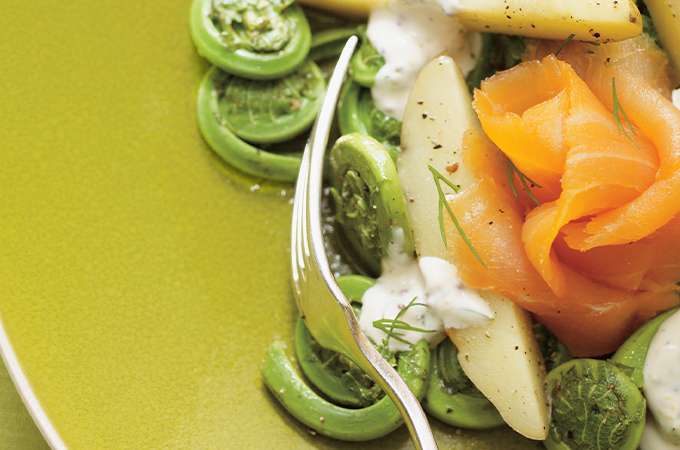You should never eat fiddleheads raw as there’s a risk of experiencing severe digestive discomfort. To make sure you cook them properly, follow these 4 steps:
1. Rinse the fiddleheads to clean and remove any small brown ends or dirt on the surface.
2. Bring two saucepans with salted water to a boil.
3. Blanch them in the first pan for 5 minutes, then repeat in the second pan.
4. The fiddleheads are now ready to be sautéed in butter or cooked in one of the recipes below.
In the kitchen
In salads, creamed or mixed with eggs, fiddleheads can be prepared in several ways. Here are some recipe ideas on how to cook them this spring.
Fiddlehead Omelette
This omelette combines fiddleheads, thick-cut pieces of bacon and chives. If you like, add grated Gruyère cheese for a decadent seasonal spin on eggs.

BREAKFAST AND BRUNCH
Fiddlehead Omelette
Smoked Salmon and Fiddlehead Salad
This salad welcomes the season with its bright, appealing colour palette. The soft green of the fiddleheads blends with the orangey-pink smoked salmon hues and the butter yellow of the potatoes. Top with a smooth sour cream and dill dressing.
Warm Duck Confit and Fiddlehead Salad
Though visually refined, this salad is very simple. After sautéing fiddleheads in butter, warm the pulled duck confit in the same frying pan. Add this to a salad of baby spinach and julienned Granny Smith apples, drizzled with honey-Dijon dressing.

